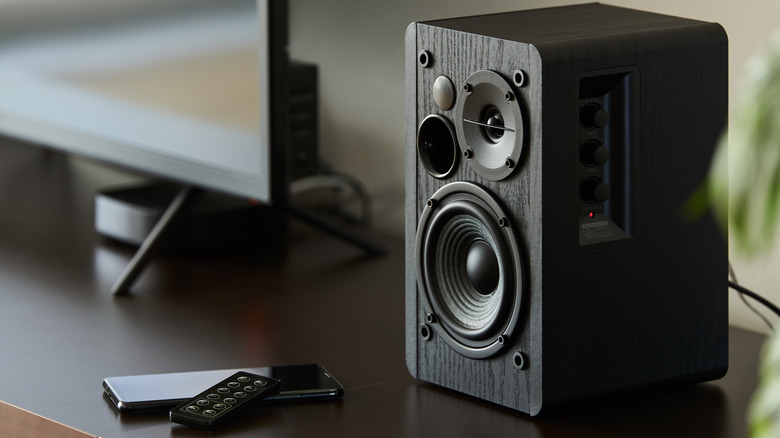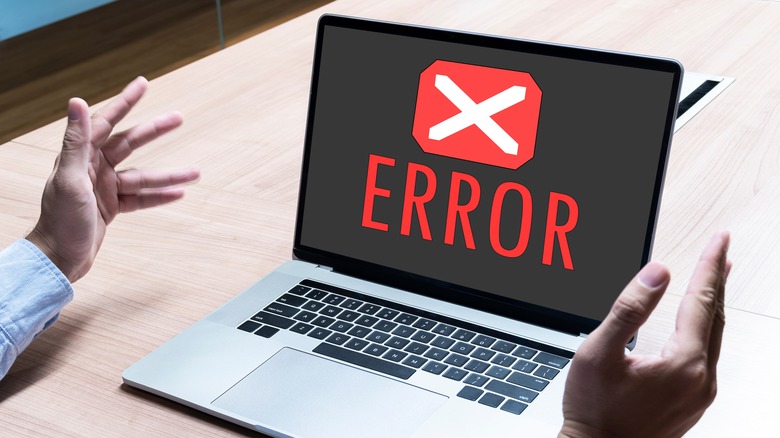How To Fix The Most Common Low Volume Problems On Windows
Windows volume issues can seem complex and confusing — especially if you're running late for a Zoom meeting or virtual presentation. Unfortunately, the causes of these problems span a broad spectrum, from physical misconnections to outdated audio drivers. However, on the bright side, most of these issues do not require professional intervention and can be addressed effectively using simple troubleshooting methods.
Identifying what's causing the issue should be your first step, but it's usually the most challenging step too. If you use desktop speakers or headphones as a playback device, your computer may have trouble communicating with the third-party device. On the other hand, if you only experience the audio issue with specific software like Zoom or Chrome, you may need to check the software's settings to figure out what's going on.
Luckily, you don't have to figure it out alone from home. If you can't figure out the source of your problem, you can tap Windows' built-in audio troubleshooter to help you diagnose common glitches that can disrupt audio performance. While this software won't give you the expert advice of a Windows repair shop, it can be a handy tool to help you get started.
How to adjust your volume settings
If you've recently introduced a new pair of speakers or set of headphones into your Windows set-up, it might require a louder system volume level than you're used to.
Fortunately, this is the easiest method to fix low-volume problems, and you can accomplish it in just a few clicks.
- Locate the small speaker icon on the taskbar's right side — it's your access point to volume control.
- Left-click the speaker icon, and a slider will appear for volume adjustments.
- Right-click the same icon if more advanced settings are needed, selecting Open Sound settings from the dropdown.
- In this new window, choose your output device and fine-tune its volume level to your preference.
While adjusting system volume settings, it's crucial to remember that individual software often possesses its own set of volume controls, which could supersede system settings. If your low-volume problems only occur with specific software, you'll likely need to fix the problem from within the respective program.
- Open the volume or sound settings menu within the specific program.
- Make sure the volume output slider is adjusted correctly.
- If that doesn't work, you may need to check whether you selected the correct output device.
Contact the software's support team if you need help finding the volume or sound settings menu.
How to update your audio driver
A crucial element of an operating system's functionality lies in its audio drivers — key components that facilitate the translation of data into sound signals which your hardware can interpret. If these drivers become outdated, they may struggle to communicate effectively with updated system components or audio hardware, leading to potential sound discrepancies such as decreased volume.
To tackle this, a refresh of your audio driver may be necessary.
- Open the Device Manager by typing it into the Windows search bar.
- Look for 'Sound, video, and game controllers' and click it.
- Identify your audio driver, and right-click it. Click Properties and select Update driver.
- Follow the on-screen prompts until Windows has searched for a newly available driver. If there is, choose to install it.
If you cannot find the correct driver in 'Sound, video, and game controller,' you can try to locate it in 'Audio inputs and outputs.' If no driver updates are available or issues persist after an update, it could suggest a different underlying problem. Alternatively, the latest driver may not always be the most suitable — if problems arise after updating, reverting to a previous version could solve the issue.
How to change your audio output device
After checking the audio connections and updating the system's audio drivers, another crucial step is to examine the audio output device. Failing hardware, such as speakers or headphones, can sometimes cause low or fading volume.
If you've just bought a new audio output device like speakers or headphones, the next step is changing your settings to accommodate.
- Navigate to the Windows Settings menu.
- From here, click Devices.
- You should see a list of your existing audio devices.
- If your new device is Bluetooth, click 'Add Bluetooth or other device' to add it.
- Your computer should automatically detect it, but if it doesn't, navigate to the Sound menu and change the output device manually.
It's important to note that you must change the output of any software you use, like Zoom or Microsoft Teams. Sometimes these programs will detect the new audio output devices, but sometimes they won't. You should also ensure you've installed the required audio drivers before switching outputs.
How to use Windows audio troubleshooter
If none of the other solutions helped your problem, you should try Windows' built-in audio troubleshooter before you schedule an appointment with your local tech repair shop. This intuitive tool helps identify and rectify common sound issues automatically, so you can focus on fixing the problems rather than finding them.
- Right-click on the small speaker icon at the right of your taskbar.
- Select Sound settings, and on the next screen, click the Troubleshoot button.
- Follow the on-screen prompts to start the automatic troubleshooting process.
- The program will ask questions about your problem and play a few sounds to test your audio output devices.
- After completing the process, the troubleshooter will provide potential solutions for your situation.
The Windows audio troubleshooter is a powerful tool, but it might not always be able to pinpoint the exact cause if the problem is complex. Multiple fixes may need to be applied. You should contact your local tech expert if that's the case.




